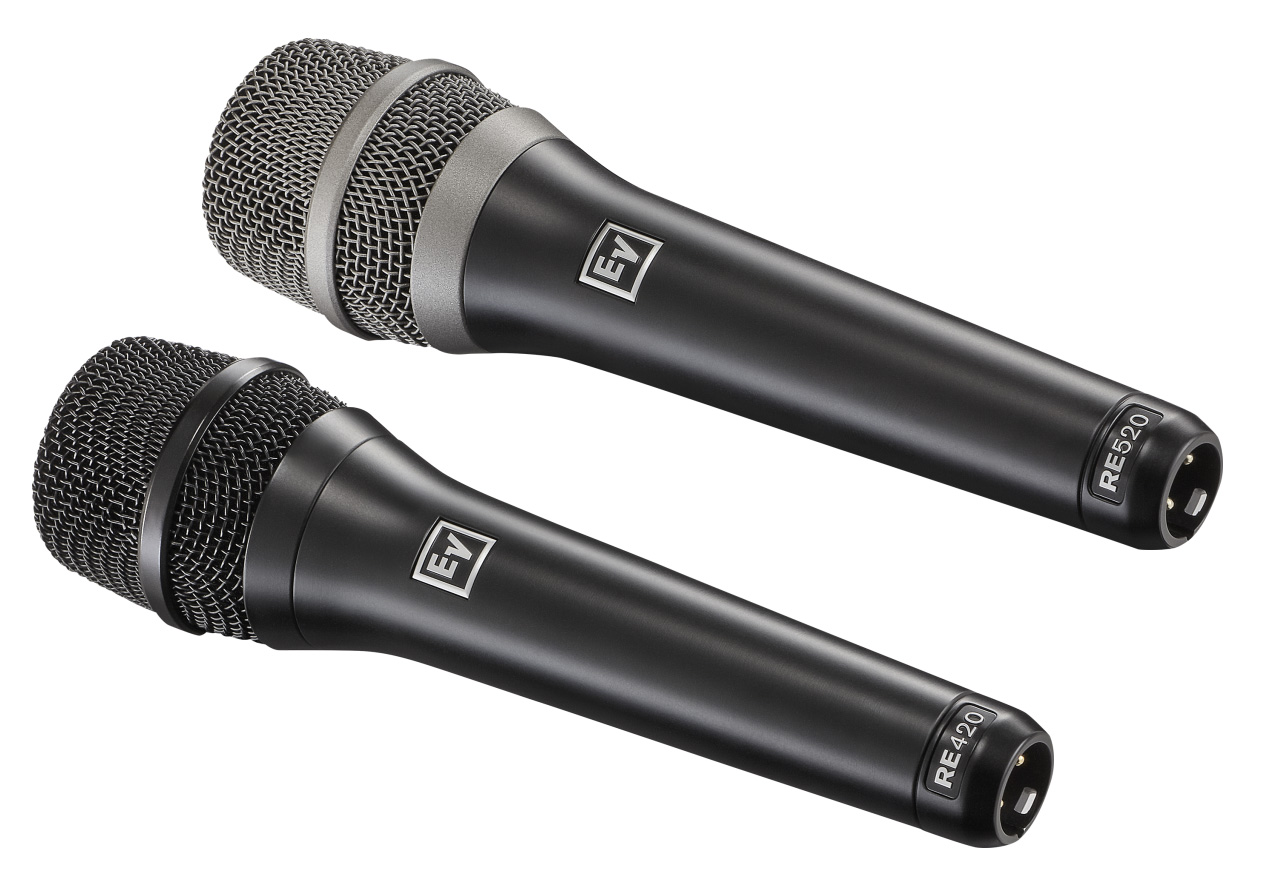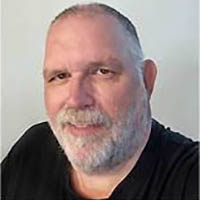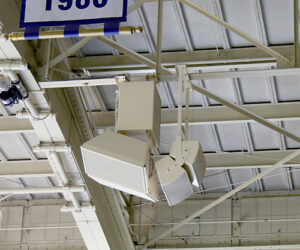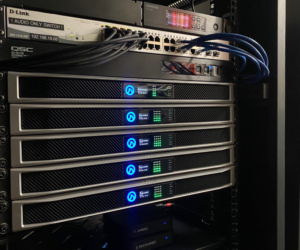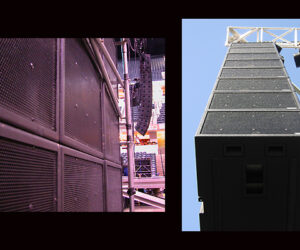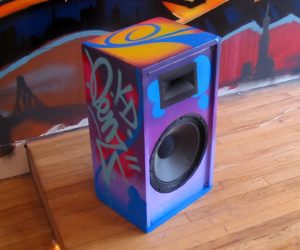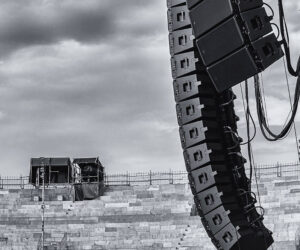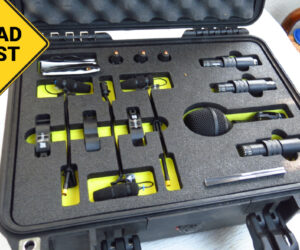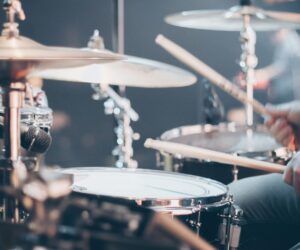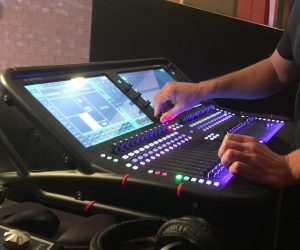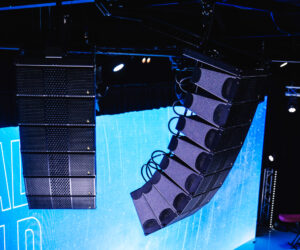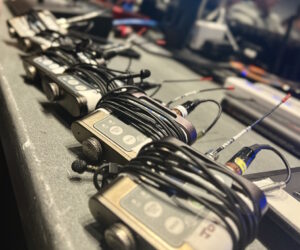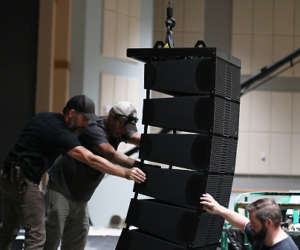There are dozens of types and styles of microphones on the live audio market, and many can be used in both voice and instrument applications. For the most part, we tend to classify mics based on how they turn sound waves into electrical signals, with two types – dynamics and condensers – employed most often for vocals.
Dynamic designs work on the electromagnet principle where a coil of wire is attached to the diaphragm and moves by a magnet, creating electricity as the sound waves push against the diaphragm. They can be very rugged and resilient to rough handling, and many can handle high sound pressure levels. However, because there’s added mass attached to the diaphragm, they may not respond as quickly to changes in sound pressure as other types.
Condenser designs have two plates with a voltage between them. One plate is made of a very light and flexible material, and acts as the diaphragm. The diaphragm vibrates when struck by sound waves, changing the distance between the two plates, which in turn changes the capacitance, producing an electrical signal.
They don’t have the added mass of a coil attached to their diaphragms and tend to be more sensitive to softer sounds and higher frequency details than dynamic mics. Condensers require power, usually supplied by phantom power from a console or a battery.
Higher-end models often have added features to benefit vocals. One phenomenon that comes into play is proximity effect – as a singer gets right up on the mic, the lower frequencies become more pronounced.
On one hand, it can fatten up a thin voice, but on the other hand, it can make add mud and change a singer’s tone as he/she moves closer and farther away from the mic. Many premium vocal mics address this issue with acoustic tuning, low-cut switches, and even electronic processing so the singer’s voice stays more consistent.
Vocal mics should be designed to deal with “pops and plosives,” the breath noises that happen when a singer uses a hard consonant like a P or B. Models designed specifically for live performance have windscreens, but the better vocal models tend to use multi-stage or layered screens to reduce the problem.
Handling noise is another issue. As it’s moved around, noise from the mic body can get transmitted to the capsule. Advanced capsule isolation to curtail this issue is a hallmark of well-designed units.
Frequency response is yet another aspect to consider. A model may specifically be designed with a reduced frequency range that better suits voices, or in some cases, there are boosts and/or cuts at certain frequencies that can help a vocal better stand out in the mix. There can also be the ability to tailor (via switches) the response of the mic for particular voices.
Experimentation is the key, as different designs are better suited to different vocalists (and their particular vocal styles). What works great with one singer may not be the best choice for another. Enjoy the following round-up of recent microphones for live vocal applications, starting with condensers.
CONDENSERS
Electro-Voice RE420 & RE520
electrovoice.com
The RE420 (cardioid) and RE520 (supercardioid) are the next generation of the Electro-Voice RE series of premium-grade, high-performance condenser vocal microphones for live performance. Both are engineered for refined, best-in-class performance, benchmarked across critical technical categories including dynamic range, maximum SPL, self-noise and transient response – all with the pure, accurate audio quality for which the RE series is renowned.
The RE420’s cardioid pattern combines effective acoustic control with a comfortable working range, allowing freedom of vocal expression. It provides warm low-frequency response, open mids and clear highs.
The RE520’s supercardioid pattern ensures superior sonic isolation and high gain-before-feedback, to maintain a vivid vocal presence – even in the most challenging stage environments. It delivers tight low-frequency response, natural-sounding mids and detailed highs.
TECHNOLOGY FOCUS: Selectable high-pass filters reduce undesirable low-frequency content when engaged; multi-stage pop filters minimize breath blasts and plosives; vibration-absorbing internal shock mounts minimize handling noise.
OF NOTE: Sleek new form factors with elegantly tapered metal handles and dent-resistant “Memraflex” grilles. Find out more here.
KEY SPECS: RE520
Type: Self-Biased Condenser
Polar Pattern: Supercardioid
Frequency Response: 40 Hz to 20 kHz
Sensitivity: 5.6 mV/Pa
Maximum SPL: 150 dB
Dimensions: 7.6 x 1.95 inches
Weight: 11.7 ounces
Of Note: Switchable full-frequency band pass and high-pass attenuation of frequencies below 150 Hz
Shure KSM9
shure.com
Type: Condenser
Polar Pattern: Cardioid, Supercardioid (switchable)
Frequency Response: 50 Hz to 20 kHz
Sensitivity: -51 dBV/Pa
Maximum SPL: 152 dB
Dimensions: 7.52 x 1.9 inches
Weight: 10.6 ounces
Of Note: Dual gold-layered, low-mass Mylar diaphragm; available as wireless handheld transmitter SKUs

audio-technica.com
Type: Condenser
Polar Pattern: Cardioid
Frequency Response: 20 Hz to 20 kHz
Sensitivity: 10.0 mV/Pa
Maximum SPL: 147 dB
Dimensions: 7 x 2 inches
Weight: 11.6 ounces
Of Note: Integral 80 Hz high-pass filter for switching from a flat frequency response to a low end roll-off
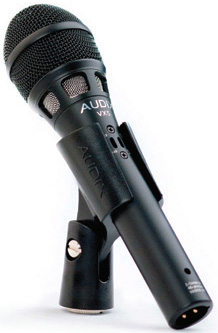
audixusa.com
Type: Pre-Polarized Condenser
Polar Pattern: Supercardioid
Frequency Response: 40 Hz to 16.5 kHz
Sensitivity: 5 mV/Pa
Maximum SPL: ≥140 dB (w/ -10 pad)
Dimensions: 7.1 x 1.8 inches
Weight: 8 ounces
Of Note: Also suited to capture acoustic instruments such as guitar, woodwinds, brass, drum overheads, piano and more.

dpamicrophones.com
Type: Condenser
Polar Pattern: Supercardioid
Frequency Response: 100 Hz – 16 kHz (+/-2 dB, at 4.7 inches)
Sensitivity: 5 mV/Pa
Maximum SPL: 160 dB
Dimensions: 8.1 x 2 inches
Weight: 10.9 ounces
Of Note: A version with a pre-programmed high-end boost has a 3 dB soft boost at 12 kHz

sennheiserusa.com
Type: Condenser
Polar Pattern: Cardioid, Supercardioid
Frequency Response: 40 Hz to 20 kHz
Sensitivity: 7 mV/Pa
Maximum SPL: 142 dB
Dimensions: 7.8 x 1.9 inches
Weight: 14 ounces
Of Note: Switchable pick-up pattern; low-cut and pre-attenuation options; large diaphragm

neumannusa.com
Type: Condenser
Polar Pattern: Supercardioid
Frequency Response: 20 Hz to 20 kHz
Sensitivity: 4.5 mV/Pa
Maximum SPL: 150 dB
Dimensions: 7.1 x 1.2 inches
Weight: 10.6 ounces
Of Note: Electronic compensation used to control proximity effect; low self-noise; high-pass filter

earthworksaudio.com
Type: Condenser
Polar Pattern: Hypercardioid
Frequency Response: 30 Hz to 40 kHz
Sensitivity: 10 mV/Pa
Maximum SPL: 139 dB
Dimensions: 7.25 x 1.95 in
Weight: 13.3 ounces
Of Note: High SPL handling (139 dB); low self-noise; capsule available for wireless transmitters

north-america.beyerdynamic.com
Type: Condenser
Polar Pattern: Cardioid
Frequency Response: 20 Hz to 20 kHz
Sensitivity: 4 mV/Pa
Maximum SPL: 150 dB (@1K)
Dimensions: 7.3 x 1.8 inches
Weight: 11.6 ounces
Of Note: Specially shaped back plate electrodes help optimize diaphragm vibrations; 5-stage pop protection

bluedesigns.com
Type: Condenser
Polar Pattern: Cardioid
Frequency Response: 40 Hz to 20 kHz
Sensitivity: 11 mV/Pa
Maximum SPL: 146 dB
Dimensions: 7.9 x 2 inches
Weight: 13.44 ounces
Of Note: Handcrafted floating capsule design; reinforced chassis protects capsule while enhancing airflow



